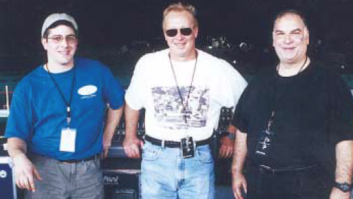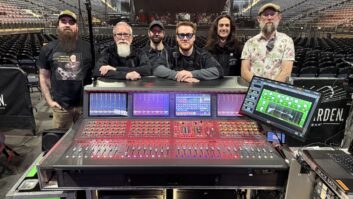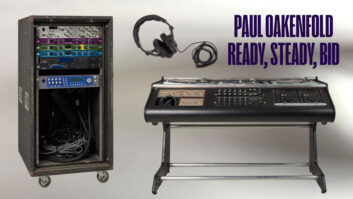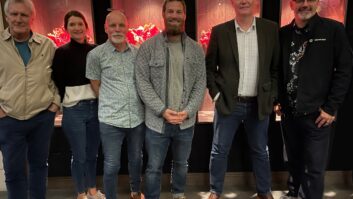REPLItech, the media manufacturing show, celebrated its 10th anniversary at the Los Angeles Convention Center in February. Ironically, the Grammys were presented right next door, at the Staples Center, on the second day of the show, so the people who make the music were a stone’s throw away from the people who make their CDs, DVDs and MDs, audio cassettes and videos. And soon, their DVD-As and SACDs.
This stew of three-letter acronyms rubbing shoulders with the glitterati of the music business is more than coincidental. For the past few years, REPLItech has given the recording industry a peek under the hood of format developments.
This year’s North American show (REPLItech also has a European and an Asian edition) had one panel dedicated to audio: The topic was mastering and authoring for high-resolution audio formats, specifically the still-nebulous DVD-A and the Sony/Philips-backed Super Audio CD. Panelists included mastering veterans Bernie Grundman and Steve Hall, VP and chief engineer of Future Disc Mastering, respectively, and Paul West, senior VP of studio operations at Universal Music in Los Angeles.
Grundman, Hall and West all bemoaned the shortage of authoring tools for DVD-Audio and were particularly critical of Sonic Solutions’ software packages, which Hall described as “bare-bones and very inadequate.” He also described the DVD-A authoring and mastering process as laborious, noting that several projects he has done have taken as long as three weeks of studio time. “You’re literally writing code as you go along, because the tools aren’t there yet,” he says.
Perhaps it’s just as well that there are few DVD-A titles and a virtually nonexistent market. West, whose operations are part of the Universal Music Group holdings, declined to address that label’s plans for DVD-A titles, but was in agreement with other panelists that DVD-A is a victim of corporate politics and intramural confusion as much as anything else.
Grundman, who opened a satellite mastering facility in Tokyo four years ago, pointed out that in Japan, a trend seems to be emerging to use the basic DVD-V format as a music product. “In Japan, where the prices of CDs are still high, they seem to like discs with three or four songs and some video on them,” he explained. “The regular DVD format is fine for that. Also, there’s no market [in the U.S.] for CD singles anymore. But in Japan, it’s a big product.” Likewise, Sony’s MiniDisc format never really caught on here, but it’s a resounding success in Japan and certain other parts of Asia. The Video CD (VCD), a highly compressed video format on a Red Book-type disc, is virtually unknown in the States but is the format of choice for the 1 billion-plus Chinese market and has been for over a decade.
If there was an overarching mood at this REPLItech show, then it was concern about the dramatic slowdown in the media manufacturing industry over the last year. Despite record numbers of replicated discs, of all types, the unit price has plummeted, with packaged CDs now routinely selling for under 20 cents on large-volume orders — often not enough to even cover the patent royalties on discs.
DVD disc prices have also dropped sharply, and the entry late last year of two major Taiwanese DVD replicators into the U.S. market (Ritek and Infodisc, the latter being the world’s largest DVD maker) has increased pressure on U.S. disc makers. Another depressing factor is the recent lackluster sales figures for music and film titles. The ripple effect of these events has been felt throughout REPLItech’s constituency, including heavy equipment manufacturers who make CD production lines — the prices of which have dropped significantly — and the used equipment market, which has seen a flood of CD-R and, to a lesser extent, CD manufacturing equipment. “You want CD-R equipment? I can have 20 lines on your doorstep tomorrow,” cracked Larry McGowan, sales manager for Canadian equipment reseller Targray.
And the tide of new formats continues. One of the more interesting ones is DataPlay, a micro-optical disc and drive combination about the size of a matchbox. DataPlay’s storage is impressive, at up to 500 MB per disc, which translates to about five hours of “CD-quality” music or 11 hours of MP3 data. The format allows for both prerecorded and recordable portions on the disc and includes Internet links for downloading. The company intends to position the DataPlay disc and its drive in a number of markets, including cell phones, e-books and video games, but the company clearly signaled that music is the first frontier it must conquer.
Remember the drive for a single universal and reliable format for everything? Maybe next year.







